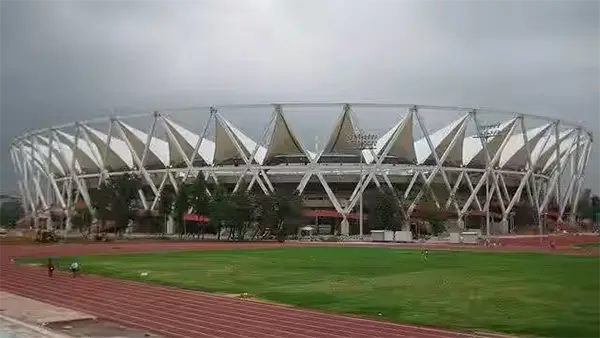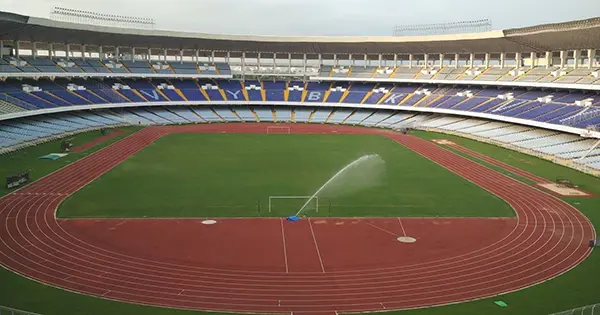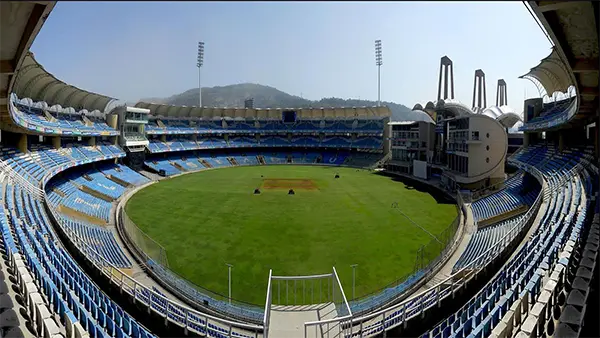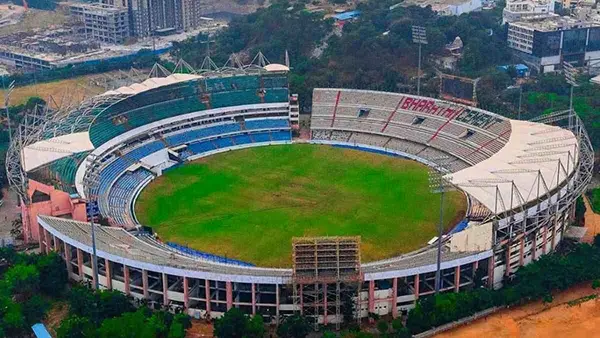
Architectural Marvels: The Design and History of India’s Modern Sports Stadiums
With its rich history and lively culture, India has some of the world’s most amazing sports stadiums. These buildings are not just places for sports events; they also show how India is growing and modernizing.
From cricket to football, these stadiums feature creative designs, modern facilities, and a strong respect for tradition. They also play a significant role since it is known for boasting enthusiasm among the sports fans.
So now, let us delve into the intricate beauty of the unexplored marvels’ design and history of some of India’s most notable modern sports stadiums.
Narendra Modi Stadium, Ahmedabad

History and Design
The Narendra Modi Stadium, formerly called the Sardar Patel Stadium, shows India’s big goals in cricket. It’s in Motera, Ahmedabad, and is the largest cricket stadium in the world, holding 132,000 people.
It underwent a massive renovation which was completed in 2020, transforming it into a modern sports complex. And if you can’t visit the place in person, but you are a sports fan, you can make Esports bets online.
Key Features:-
- Capacity and Facilities: With over 132,000 seats, it surpasses the Melbourne Cricket Ground, previously the largest. The stadium features 76 corporate boxes, four team dressing rooms, and a clubhouse with an Olympic-sized swimming pool.
- Architecture. Designed by the famous architect Populous, the stadium has a unique bowl shape that lets every spectator have a clear view. The roof structure, supported by only a few pillars, provides excellent shade without hindering visibility.
- Feasibility. The stadium incorporates green building practices, including rainwater harvesting and a solar power system, emphasizing continuity alongside grandeur.
Eden Gardens, Kolkata
History and Design
Eden Gardens, often referred to as the “Mecca of Indian cricket,” has a history dating back to 1864. It is among the most recognizable and historic cricket stadiums in the entire globe.
While it has been renovated several times, the biggest renovation was done for the 2011 ICC Cricket World Cup.
Key Features:-
- Historical Significance: Eden Gardens, with a seating capacity of 66,000, has hosted many historic matches, including the 1987 and 2016 ICC World Cup finals. Its historical significance adds to the aura of the venue.
- Renovations: The 2011 renovation added modern amenities while keeping the stadium’s classic charm. Key enhancements included improved seating, better drainage systems, and upgraded facilities for both players and spectators.
- Aesthetic Appeal: The iconic BC Roy Club House and the lush green outfield make Eden Gardens more than just a sports venue; it’s a beautiful place that reflects Kolkata’s passion for cricket.
Jawaharlal Nehru Stadium, Delhi

History and Design
Named after India’s first Prime Minister, the Jawaharlal Nehru Stadium in Delhi is a multipurpose stadium mainly used for football and athletics.
It was first built to host the 1982 Asian Games and later underwent a major renovation for the 2010 Commonwealth Games.
Key Features:-
- Capacity and Use: The stadium can hold up to 60,000 spectators and is designed to host various sports and events, such as concerts and cultural festivals.
- Modernization: The 2010 renovation brought significant upgrades, including installing a new roof made from PTFE (Polytetrafluoroethylene), a lightweight and durable material that offers better weather protection.
- Design Elements: The circular, coliseum-like design allows for excellent acoustics, making it ideal for large-scale events. The new lighting system meets global standards, ensuring clear clarity for night events.
Salt Lake Stadium, Kolkata

History and Design
Officially known as Vivekananda Yuba Bharati Krirangan, Salt Lake Stadium is one of the largest football stadiums in the world. Inaugurated in 1984, it has been a central hub for Indian football and athletics.
Key Features:-
- Capacity and Renovation: Originally, the stadium could hold up to 120,000 people, but renovations decreased it to 85,000 to make it more comfortable and safer.
- World-Class Facilities: The renovation included the installation of modern amenities, upgraded dressing rooms, and enhanced spectator facilities, aligning the stadium with FIFA standards.
- Significant Events: Salt Lake Stadium has hosted numerous prestigious events, including the 2017 FIFA U-17 World Cup, enhancing its reputation on the global stage.
DY Patil Stadium, Navi Mumbai

History and Design
The DY Patil Stadium opened in 2008, is a modern stadium for cricket and football in Navi Mumbai. It is known for its contemporary design and high-quality facilities.
Key Features:
- Seating and Comfort: The stadium has seats for 55,000 people, with bucket seating that ensures comfort and a clear view of the field for spectators.
- Innovative Architecture: The stadium features cantilevered roofs that cover the stands, providing shade and protection from the elements. This design allows for an unobstructed view of the sky, enhancing the spectator experience.
- Multipurpose Use: Besides sports, DY Patil Stadium can also host concerts and cultural events, making it a versatile venue in Navi Mumbai.
Rajiv Gandhi International Cricket Stadium, Hyderabad

History and Design
The Rajiv Gandhi International Cricket Stadium, another marvel of modern architecture, is situated in Hyderabad. Inaugurated in 2004, it has quickly become a prominent venue for cricket in India.
Key Features:
- Capacity and facilities: The stadium can accommodate 55,000 spectators and has modern features like large dressing rooms, media centers, and VIP lounges.
- Architectural Design: The stadium’s special layout has a bowl-shaped structure with stands designed to give the best visibility and create an exciting atmosphere during matches.
- Technological Advancements: The stadium is prepared for bad weather with advanced drainage systems and high-quality floodlights, so matches can carry on smoothly regardless of the conditions.
Conclusion
India’s modern sports stadiums are more than just places for sports; they’re also architectural wonders that show the country’s dedication to sports and progress.
These stadiums blend history, modern design, and top-notch facilities, making them famous landmarks.
As India becomes a bigger player in global sports, these stadiums will be essential for hosting international events and shaping the nation’s sports culture.
Whether you love sports or admire architecture, visiting these stadiums gives you a taste of India’s dynamic energy.











